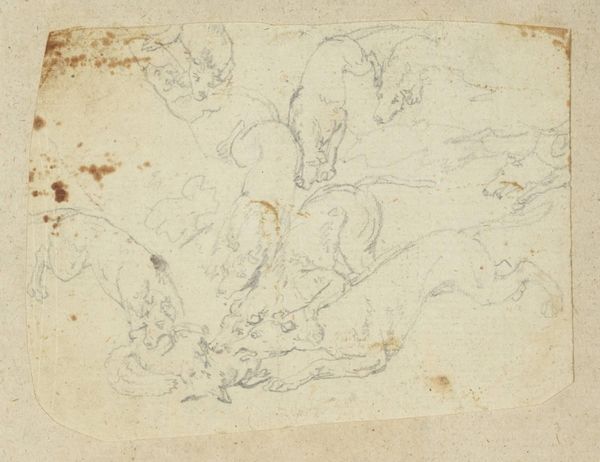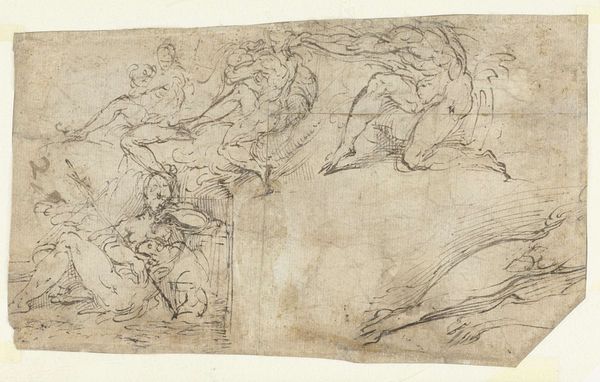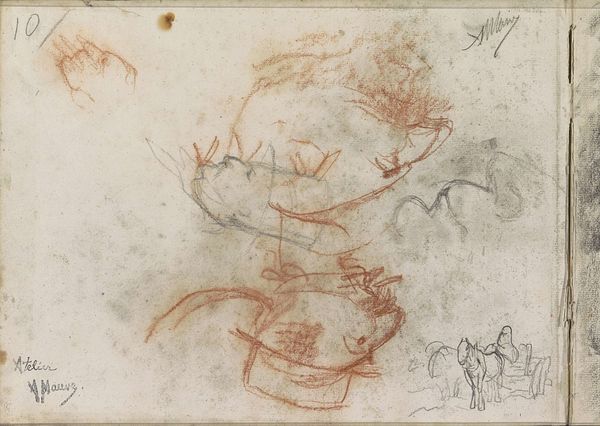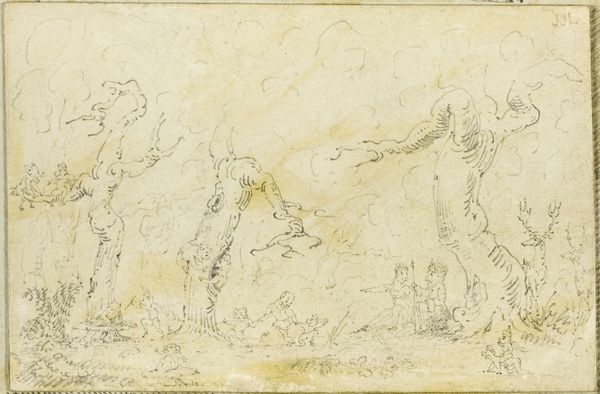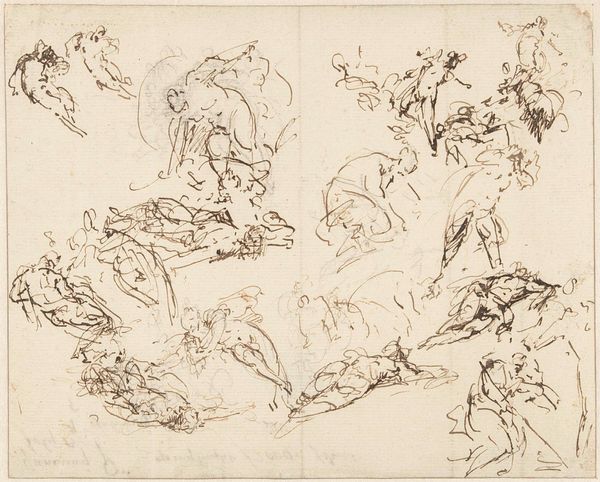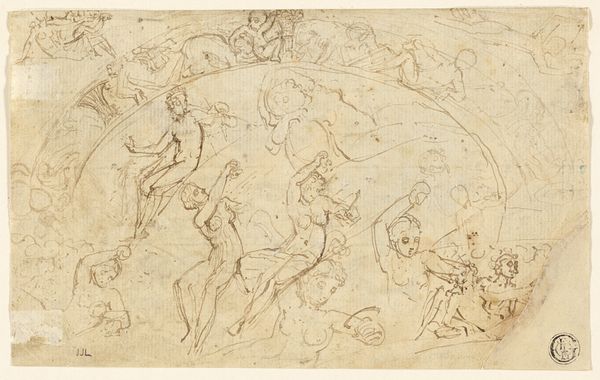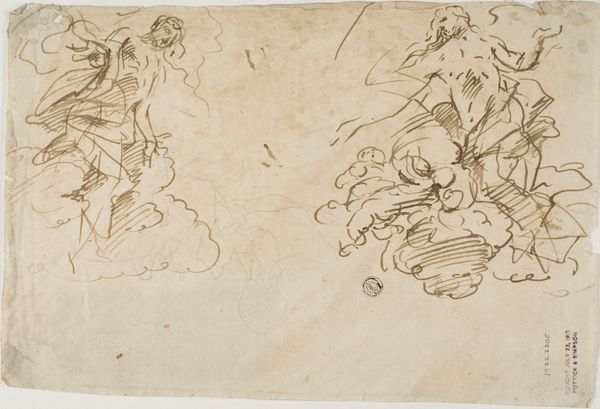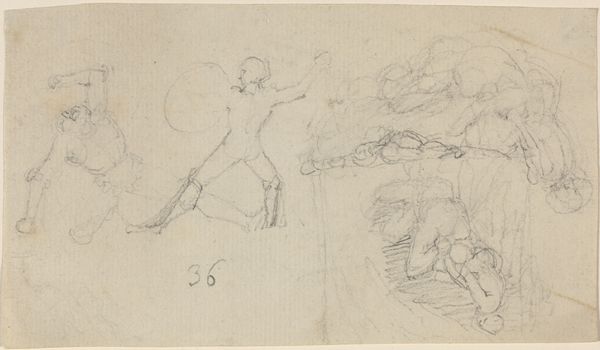
Cavalry Engagement (recto); Concert of Angels (verso) 1624 - 1663
0:00
0:00
drawing, ink
#
drawing
#
baroque
#
ink painting
#
charcoal drawing
#
figuration
#
ink
#
horse
#
men
#
line
#
history-painting
Dimensions: 5 x 7-1/4 in. (12.7 x 18.4 cm)
Copyright: Public Domain
Curator: This lively drawing, entitled *Cavalry Engagement (recto); Concert of Angels (verso)*, is attributed to Francesco Allegrini, and dates sometime between 1624 and 1663. It's currently held here at the Met. Editor: My initial reaction is a feeling of dynamic energy. The lines, though spare, capture the raw power of the horses and the chaotic movement of battle. I wonder what paper and ink were accessible to Allegrini that provided him this means of visual storytelling? Curator: Excellent question. Drawings like this were crucial for disseminating artistic ideas, functioning as portable and relatively inexpensive prototypes before paintings. It allows broader segments of the population beyond just aristocratic circles to experience this military subject matter. Editor: It makes me think about the cultural narratives around warfare and heroism at the time. Was this drawing commissioned, or was it a personal study? I am struck by the loose linework which suggests the artist was more interested in expression and movement rather than precise record-keeping. The line is clearly the primary agent, so how does the lack of laboring with paints influence reception? Curator: It's thought to be a preparatory study. As for your point about reception, it raises important considerations about artistic intention. During the Baroque, courtly patronage exerted considerable influence. It can’t be denied the extent that art reinforced a message from elites. Editor: And did those expectations limit Allegrini or were those the necessary constraints which enabled such rich creativity? And how was the material itself obtained? Was it commissioned locally? Purchased? There are so many factors regarding materiality. Curator: We can speculate endlessly on Allegrini’s process. Editor: The work remains in the collection today so this act of creation and procurement shaped collecting and viewing tastes over centuries. Even through a single drawing. Curator: Absolutely. These sorts of insights help us more fully understand art and society, and it underscores the power a work holds even after it is made and even today. Editor: Exactly. These factors affect contemporary museum collecting strategies to reach a wider, increasingly conscious public.
Comments
No comments
Be the first to comment and join the conversation on the ultimate creative platform.
